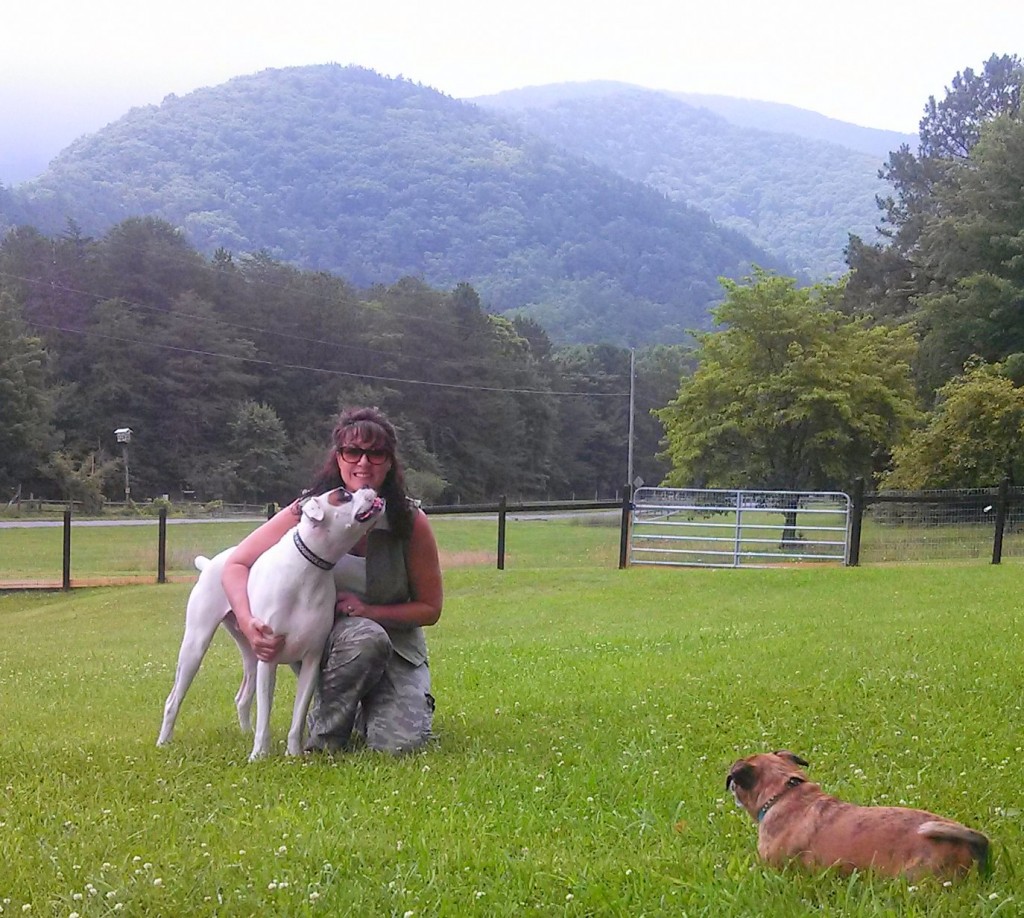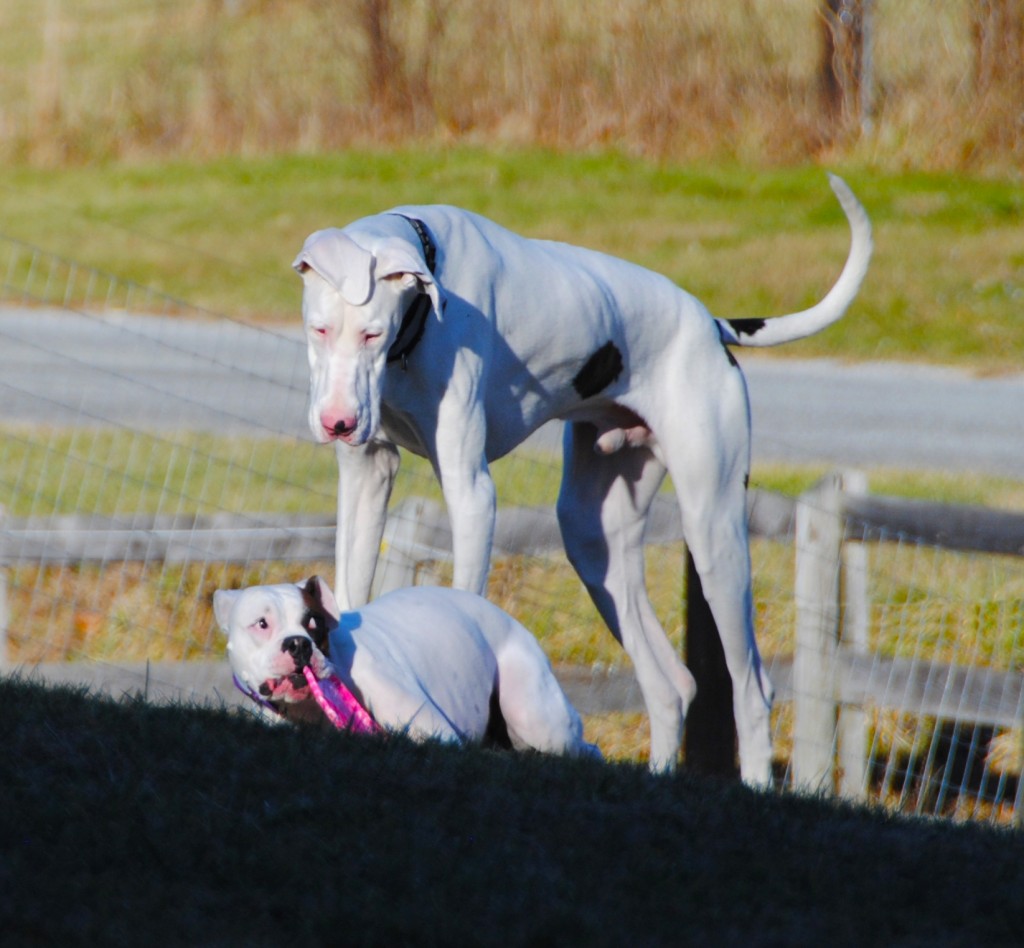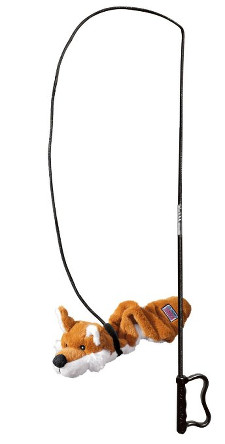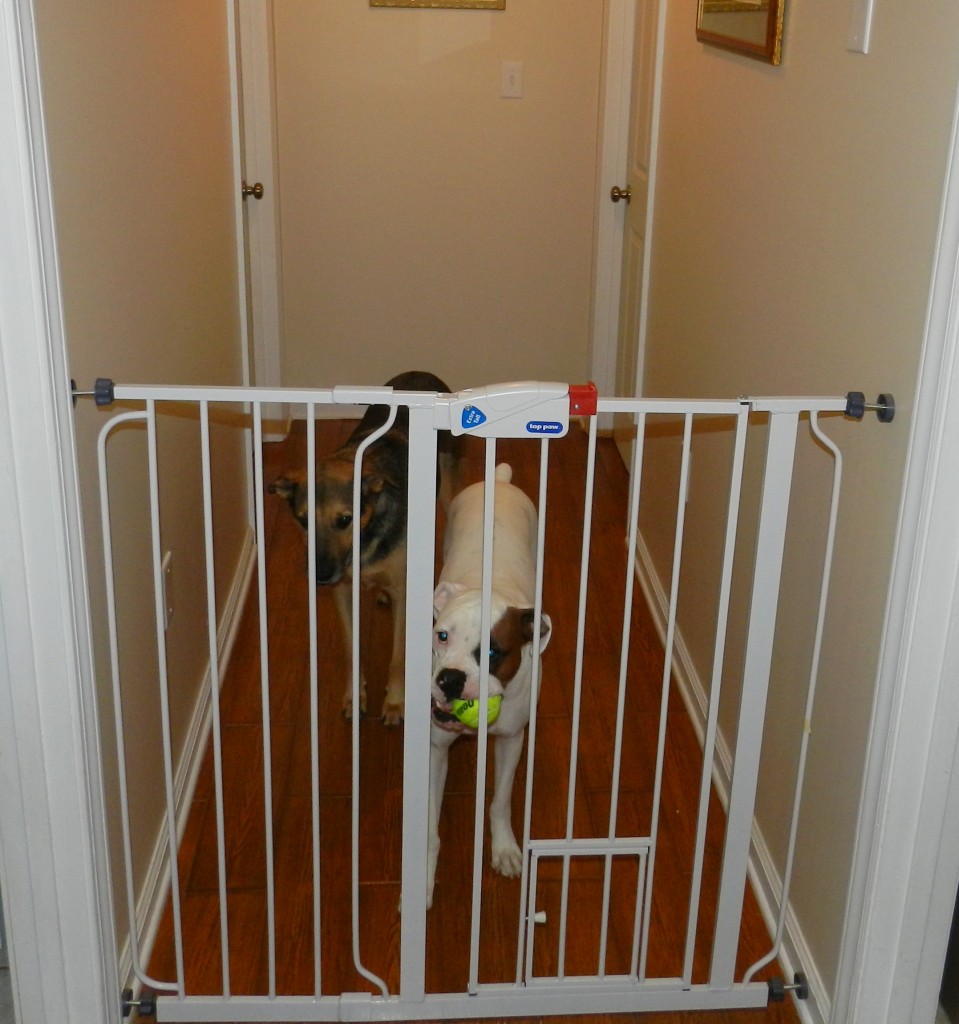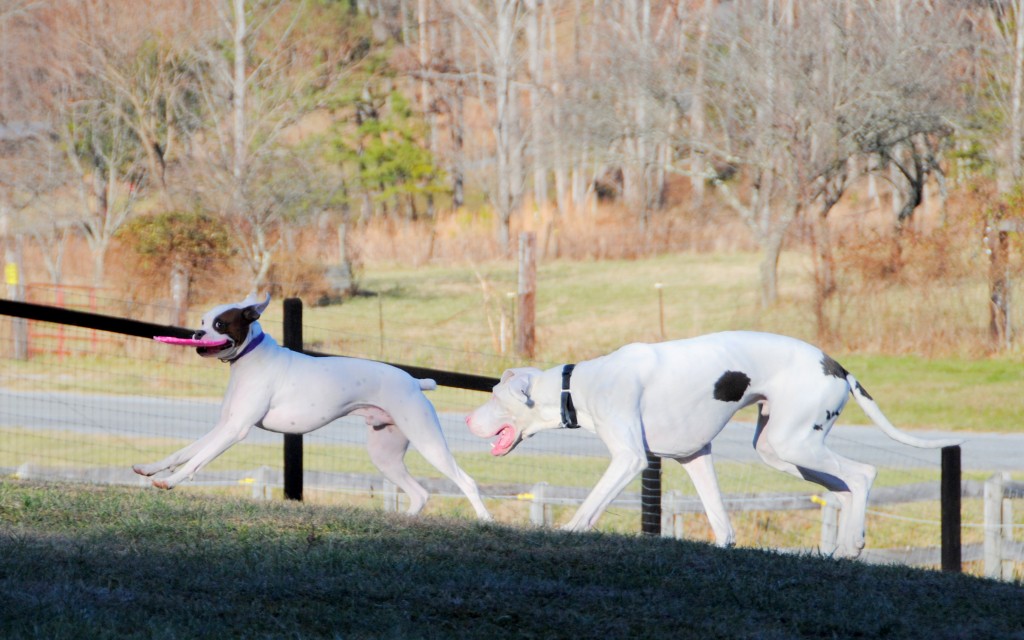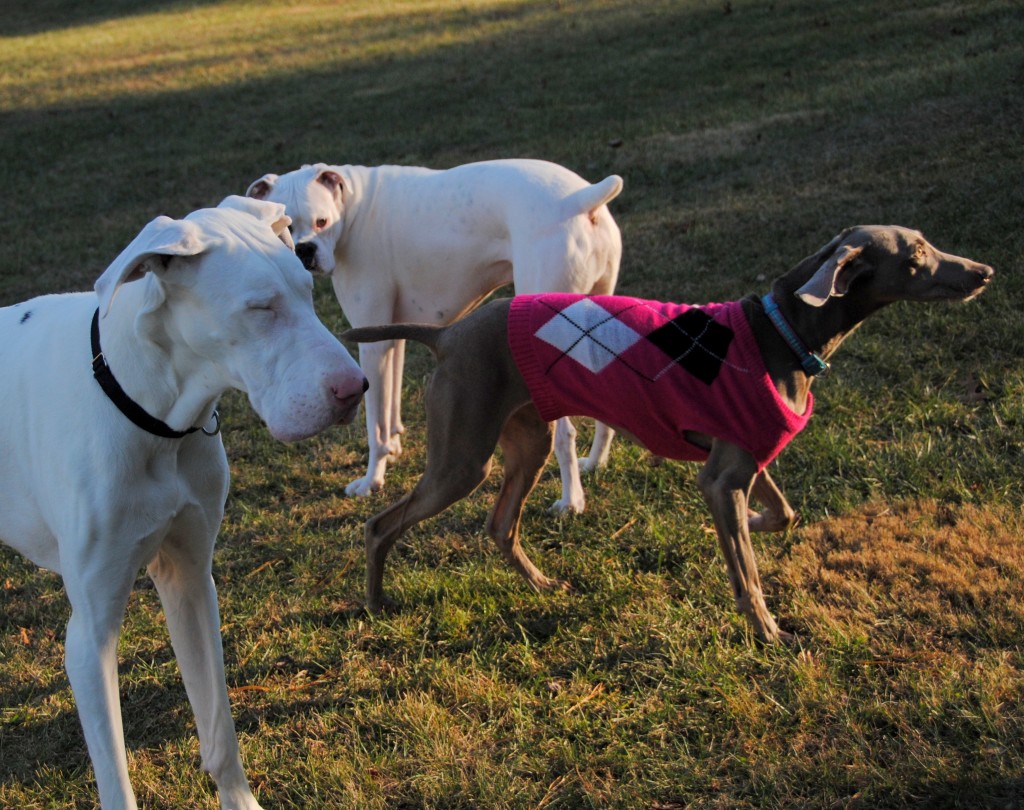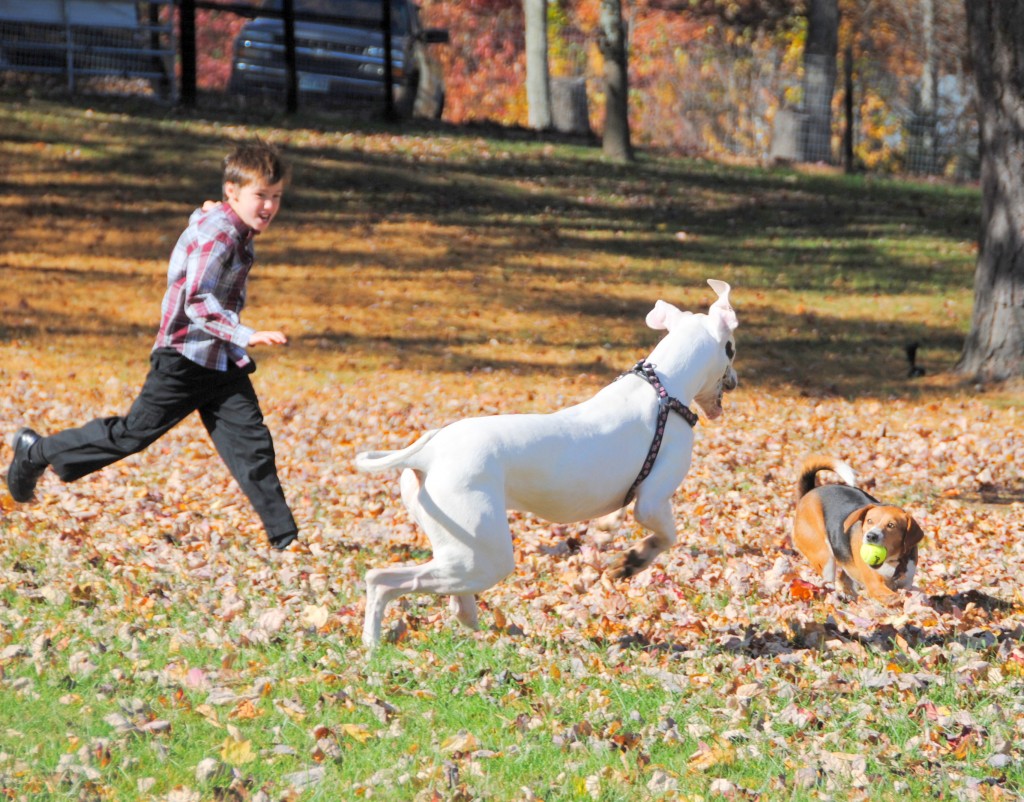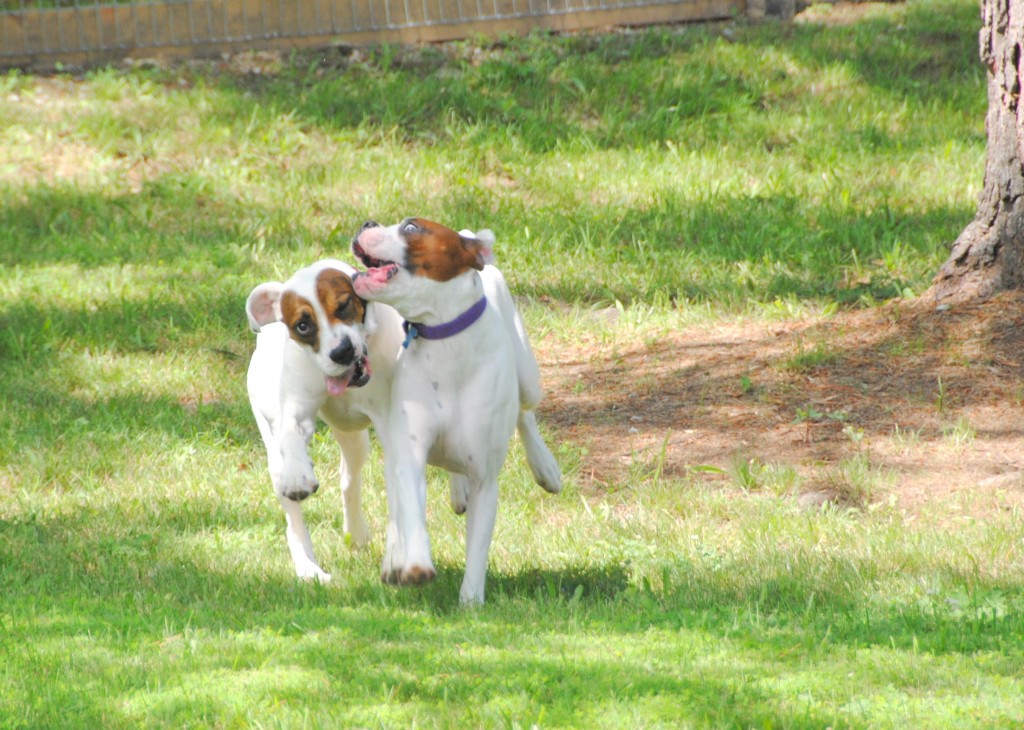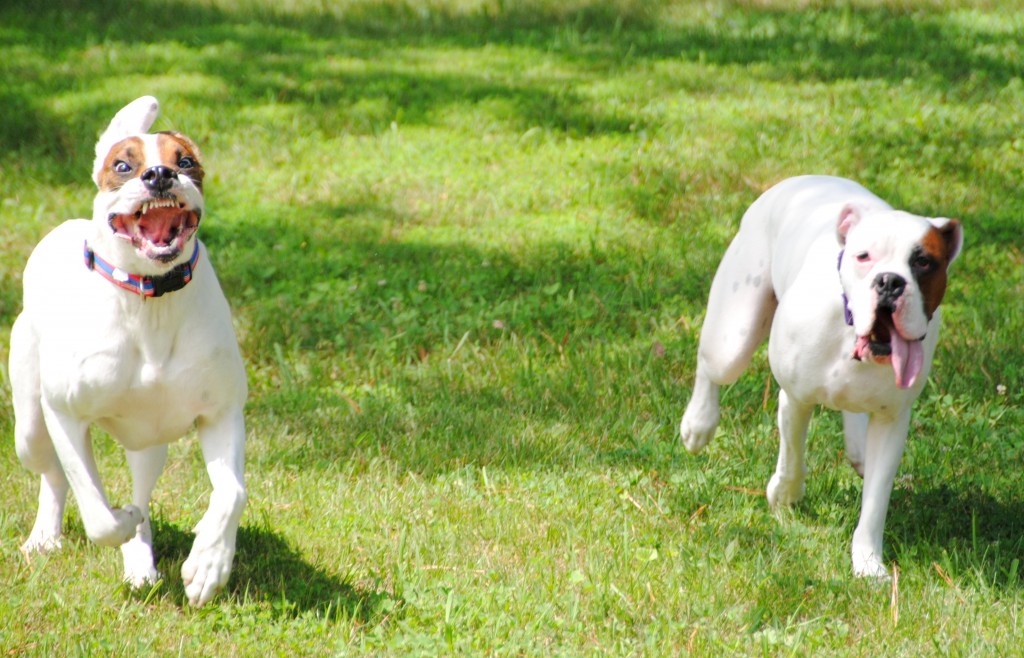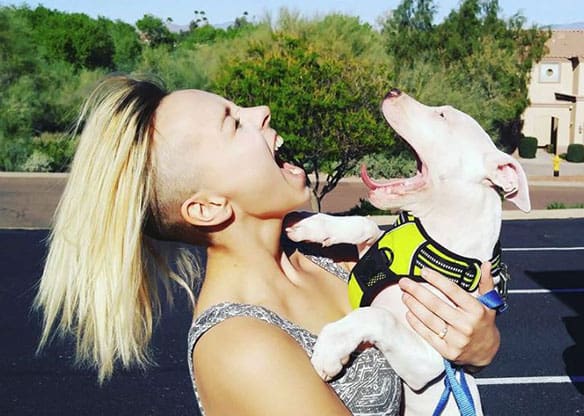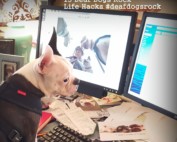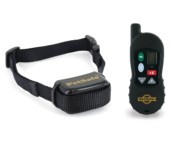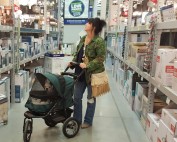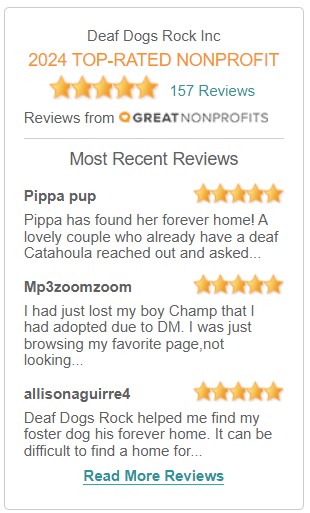By Christina Lee – DeafDogsRock.com
Lately Chris, Bud, Nitro and I have been having so much fun inviting new deaf dog families to our Deaf Dogs Rock headquarters for “play dates” or “play groups”. It is so much fun spending time with new deaf dog owners and also helping them with any issues they may be having with their new dogs.
Nitro, Christina Lee and Tallulah in their new fenced in Deaf Dogs Rock playground for deaf dogs.
Bud: “Oh snap! He is right behind me isn’t he?”
(Deaf Rocker dog Bud of Deaf Dogs Rock playing with newly adopted deaf dog Shamus from Green Dogs Unleashed)
I think one of the challenges I hear the most from new deaf dog owners (many of the deaf dogs adopted seem to run on the younger side) is when the deaf dogs get into a their new home and proceed to drive the resident older dog crazy because the deaf dog will never give the older dog time to adjust but instead wear the dog out by constantly annoying the senior dog. If this sounds familiar and is one of the challenges you are facing with your new deafie, there are several things you can do to help give your older dog a break from your new addition. I recently purchased a “flirt pole” and when my young deaf boxer is getting on my older shepherd’s nerves, I get the flirt poll out to redirect some of that energy. Here is the flirt pole I purchased made by Kong.
One of my favorite videos on what you can do with your dog when you incorporate a flirt pole into your play and training is by the awesome folks at BADRAP.org. Click here to view BADRAP’s Flirt Pole Video.
Some of the benefits of using a Flirt Pole include:
* A tired dog is a good dog
* The flirt pole is a GREAT tool to use to exercise your dog (and you don’t have to be in great shape to use this tool).
* Redirection – Redirection is key in training and working with a deaf and hearing dogs. Use this tool to redirect a younger deaf dog away from an older dog (this also works as a great tool to give the small dogs in the household a break as well).
* Impulse control. I sometimes will sign to Nitro and Bud to “sit and wait” or “lay down and stay” before I give them the “release sign” to go get the toy at the end of the flirt pole.
* Another wonderful benefit is having a tool/toy where the dog can run fast and you don’t have to worry about having a perfect recall.
* With the flirt pole you can teach your dog to release the toy by working on the signs “drop it” or “leave it”
* You can also use the flirt pole to test the visual impairment of a deaf puppy like Bobbie and I did the other day. When a puppy is reported to be somewhat blind, yet the pup can follow a toy on a flirt pole, then the puppy can probably see better than what was originally reported (we tested deaf puppy Riley the other day and realized he could see much better then what the Vet had reported).
Using Tether Training as another form of “Time Out” by redirecting the dog’s attention away from another dog in the house and getting the dog’s attention on you for awhile.
Another thing you can do to help with redirecting your dog’s attention is to incorporate some tether training with your dog when you are working around the house. If you have a deaf dog (or a hearing dog) who continues to want to engage with your older dog (or smaller dogs) all the time, go ahead and give a “time out” sign and then tether your deaf dog to you. Click here to view our Tether Training information. What TT does is give you some great training time with your dog attached to you.
I love tether training because I can do “watch me” training, incorporate a lot of pointing when I move around the house and the dog gets very tired fast. By doing tether training you are teaching your dog to respect and watch your body language/space (when you walk your dog on a leash after tether training), and you will be amazed at the progress you will make with your dog when you go on a walk. When you tether train for an hour or two a day, you will be pleasantly surprised by how tired your dog will get from having to follow your every move. Your deaf dog will also recognize when you give the “time out” sign if he/she doesn’t “settle down”, the dog will spend his/her time tethered to you (think of making a person dig a ditch because it is work for the dog to keep up with you moving around). Since dogs are basically pretty lazy and will always take the easiest way out of something, you will see your deaf dog settle down when you give your dog the “time out” sign or the “settle down” sign.
What about setting up a “Time Out” area for your deaf dog?
I always recommend providing a “time out” area in the house somewhere. Never use the crate for punishment or time out. I have a strong baby gate set up in my hallway and when one of the dogs is being crazy sometimes they get a “time out” in the hallway until the settle down. Also a KONG dog toy can be your best friend. You can buy a couple of Kong dog toys (at most pet retailers) and stuff them with canned dog food, dry kibble and peanut butter and then freeze them (but only coat the inside walls and leave the middle blank – You will fill the middle with yummy soft treats like lunch meat right before you leave). If you don’t have a time out area (or even if you do) give your dog a frozen Kong to lick, paw at, and keep him occupied! The Kong also helps keep a dog occupied when you are leaving for work and they have to go into their crate or kennel.
Stuff each Kong with wet dog food, dry kibble and some peanut butter but only line the inside walls of the Kong and freeze. Right before you leave you will fill the center with bologna or soft food so that you leave the middle soft so there is no danger of suction in the middle.
The best way to keep your dogs happy and healthy is to socialize your dog early and try to set up playgroups with other dog friendly dogs. The following photos are pictures taken from some of our play dates here at our Deaf Dogs Rock Headquarters in Virginia.
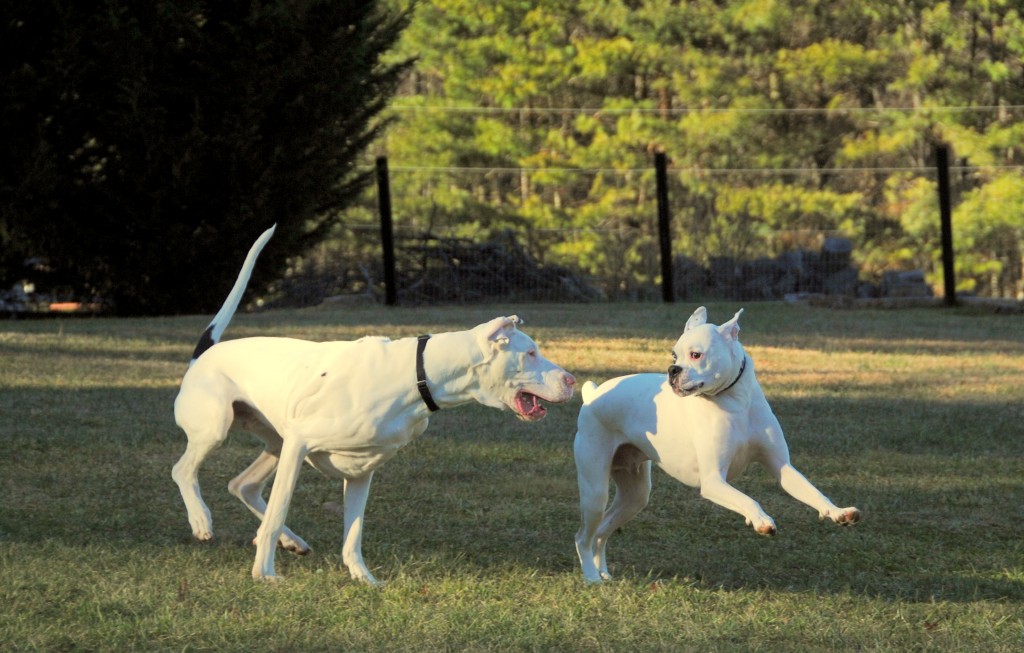 Deaf dogs Shumus and Nitro playing.
Deaf dogs Shumus and Nitro playing.
Bud being stalked by Shamus!
Photos of Deaf Dog Dozer (who now lives in WA state and our deaf dog Bud playing)
Note from Christina: I am not a professional dog trainer although I have worked very closely with some of the best dog trainers in our region training my own dogs over the past few years. The advice I give you is just my opinion on what has worked for me when training my two deaf dogs and four hearing dogs. If you are having behavior problems with your dog, then I highly recommend you seek a professional dog trainer to help you work through some of your dog’s issues.

